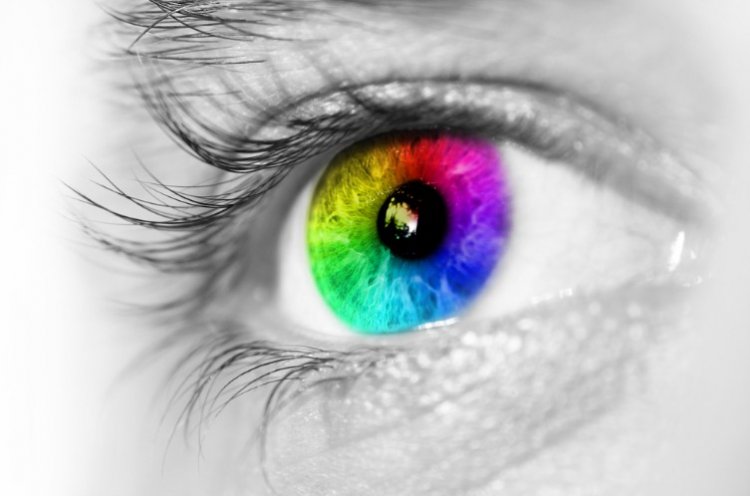
1. The Cornea: light enters our eyes through the cornea. It is a thin transparent tissue found in front of the eye which gathers and allows the light into the eye in an effective manner.
2. The Iris: After light entered the eye through the cornea it goes past the iris. The iris is the colored part of our eyes that has the black dot the pupil in the middle of it. The iris restricts and dilates to regulate the amount of light entering the eye. A restricted iris makes a small pupil allowing less light in and dilation opens the pupil allowing more light in.
3. The Lens: After light entered the pupil they reach the lens right inside the pupil. The lens sharpens what we see by becoming more convex or flattening out. The more convex the more it bends the light to focus it whereas the flatter lens bends the light less. In this way the lens always insures the sharpness of the image.
4. The Vitreous Fluid: The light entered past the lens and now passes through a gel like substance the fills 80% of the eye’s volume. This is the vitreous (meaning glasslike) fluid. This gel type of fluid maintains the elasticity of the eye and prevents it from losing its shape.
5. The Retina: Finally the light reaches the retina. The retina is similar to the film of a camera (remember that?) It is the most complex part of the eye. This tissue receives more information from outside the body than any other organ in the human body. In actuality it is a network of millions of sensors that collect light that are found in the innermost part of the eye. These sensors are called cones and rods. They received the light focused on them from the lens and they pass the information to the brain. There are 120 million(!) rods in the eye which enable detection of the faintest light in poorly lit situations. There are 6 million cones in the eye which process color and detail.
Modern cameras are very advanced but they can’t compete with the speed of our eyes. 10 milliseconds is what it takes for the eye to process an image. That means from the millions of cells sending information to the brain the amount of information to process is overwhelming. Yet the eye together with the brain processes the image in this amazingly short amount of time. For information from a single optical nerve cell to be processed by a computer would take a few minutes. Times that by 10 million optical nerve cells and the computer would need over one hundred years to process one second of human vision!
6. The Nerve Fibers: Each eye has over a million optic nerve fibers that are electrically connected to the optic nerve center of the brain. The light waves are cleverly translated into electric impulses that are transported to the brain via the optic nerve fibers.
7. The Eye- An Extension of the Brain: The eye is in essence an extension of the brain. The processing of the image is done in the brain which is the most complex organ of the human body. It processes, interprets and recreates an astounding amount of electric impulses into sharp images. The eye is but one part of the complexity of human vision whereas the main processing takes place in the brain.
This description of the eye, impressive as it sounds is actually an oversimplified description which doesn’t really begin to touch on its true complexity. We didn’t discuss eyelids, tear ducts, tear glands, the screen of tears protecting the eyes, the retinal capillaries that feed the retina, provide it with oxygen, remove wastes and cleanse it, the six muscles responsible for eye movement in every direction, the internal muscles of the iris which hold the lens, and the fact we have two eyes that give us three dimensional vision and perception of depth plus many other wonders we haven’t touched upon. The eye is composed of over 2 million parts.
Would you accept millions of dollars to part with your vision? I don’t think so. Contemplate the G-d gave us a gift that all the money in the world can’t buy. After all, a blind man still won’t feel properly compensated for his loss of vision even if he’s is fabulously wealthy.
So how do we thank our Creator for this amazing gift if we don’t know how amazing it is? “If our mouths were filled with song like the sea we wouldn’t be able to thank G-d for one out of the million kindnesses he does with us”. (From Nishmat Prayer)
Let us at least say with more concentration the blessing; “Blessed are You, G-d our Lord, king of the universe, Who opens the eyes of the blind.”
